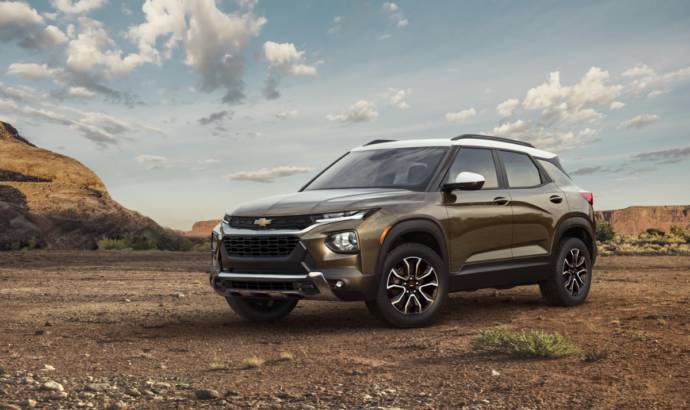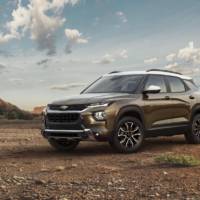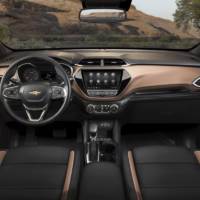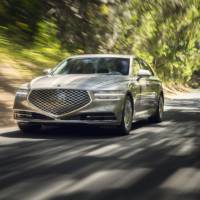Chevrolet is updating its SUV offering in the US with the introduction of the new 2021 Trailblazer. The Trailblazer features a bold front fascia and sports car-inspired rear design. The ACTIV trim package amplifies this sporty style with a two-tone roof, unique front and rear fascia and dual exhaust, along with sport terrain tires and suspension tuning enhancements.
“Slotting between the Trax and Equinox, the addition of the Trailblazer provides us with a great opportunity to expand the Chevy SUV family to new audiences,” said Steve Majoros, director of Chevrolet passenger car and crossover marketing.
ACTIV trim Trailblazers feature a new interpretation of the signature dual-port grille, with a larger opening for a more rugged look. The RS trim features a performance-inspired mesh grille with black Chevy bowtie and unique front splitter elements to define its sporty demeanor.
Inside, the Trailblazer features a driver-focused, dual-cockpit interior design with an integrated center stack. High-quality finishes and stitching are customized to allow for different appearances at each trim level. The center console provides several storage options with up to 3.5 liters of open storage and 4.4 liters of storage under the armrest, as well as dual cupholders.
Trailblazer ACTIV is equipped with unique tires and shock tuning. The ACTIV dampers are tuned to enhance vehicle performance and ride comfort when traveling on gravel roads. The Hankook Sport Terrain 17-inch tires feature an aggressive shoulder design and an all-season tread pattern.
Powered by either a 1.2L turbo or 1.3L turbo engine, the Trailblazer will deliver up to 155 horsepower. Both engines are mated with a standard Continuously Variable Transmission with selectable stop/start capability. A nine-speed automatic transmission is also available on Trailblazers equipped with the 1.3L engine and all-wheel drive.
The Trailblazer is available with Chevy’s selectable AWD, also found in the Blazer and Traverse. Selectable AWD allows drivers to decide whether to activate their AWD system in off-road or inclement weather situations, or to deactivate when AWD performance is not required, to achieve improved fuel economy.





